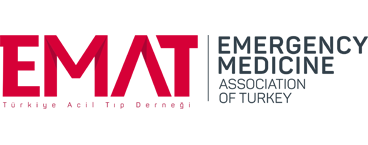Surgical versus conservative management for traumatic brain injury in elderly patients: A propensity‑matched cohort study
Gunaseelan Rajendran , Sasikumar Mahalingam
, Sasikumar Mahalingam , Anitha Ramkumar
, Anitha Ramkumar , Kumaresh Pillur Tamilarasu
, Kumaresh Pillur Tamilarasu , Rahini Kannan
, Rahini Kannan
Department of Emergency Medicine and Trauma, Aarupadai Veedu Medical College and Hospital, Vinayaka Missions’ Research Foundation (DU), Puducherry, India
Keywords: All‑cause mortality, Glasgow Outcome Scale, nonoperative management, propensity‑matched cohort, traumatic brain injury in elderly individuals
Abstract
OBJECTIVE: The management of traumatic brain injury in elderly patients remains a topic of conflicting evidence in the literature. While some studies suggest that surgical intervention is beneficial, others indicate increased mortality and morbidity. Therefore, we conducted this retrospective matched cohort study to further investigate the role of surgical and conservative management for traumatic brain injury in elderly individuals.
METHODS: The authors conducted a retrospective review comparing patients with traumatic brain injury who underwent nonoperative management (NOM) versus those who underwent operative management (OM). Case matching was employed to create an artificial control group matched for age, sex, noncontrast computed tomography (NCCT) findings, and symptoms at a 1:1 ratio of treatment to control. The inclusion criteria included patients aged 60 years and above who presented to the emergency medicine department with head injuries resulting from various causes, such as road traffic accidents, falls, or assault, whereas the exclusion criteria included polytrauma, severe hypovolemic shock, and referrals to other institutions. The outcomes of interest included all cause mortality and Glasgow Outcome Scale (GOS) scores, with statistical significance set at P < 0.05.
RESULTS: Optimal case matching was achieved for 52 out of 96 patients who underwent surgical management. There was no statistically significant difference in all cause mortality between patients who underwent surgical management (32.69%) and those who did not (28.82%). Similarly, there was no statistically significant difference in the GOS score at 1 month between the two groups. A subgroup analysis based on the severity of traumatic brain injury and radiological diagnosis of intracranial injury revealed no difference between the OM and NOM groups, except for patients who underwent midline shift surgery.
CONCLUSION: There was no difference in all cause mortality among elderly patients with traumatic brain injury regardless of whether they received conservative or surgical management, except for patients who underwent midline shift surgery
How to cite this article: Rajendran G, Mahalingam S, Ramkumar A, Tamilarasu KP, Kannan R. Surgical versus conservative management for traumatic brain injury in elderly patients: Apropensity-matched cohort study. Turk J Emerg Med 2025;25:92-9.
• Approval Number – JIP/IEC/2014/8/357
• Approval Date – October 10, 2016
• Approval Body – JIPMER Institute Ethics Committee (Human studies).
• GR, SM, AR – Conceptualization, Writing, Resources, and Editing and Reviewing
• RK, KPT– Resources, Writing, and Reviewing.
None Declared.
None.

